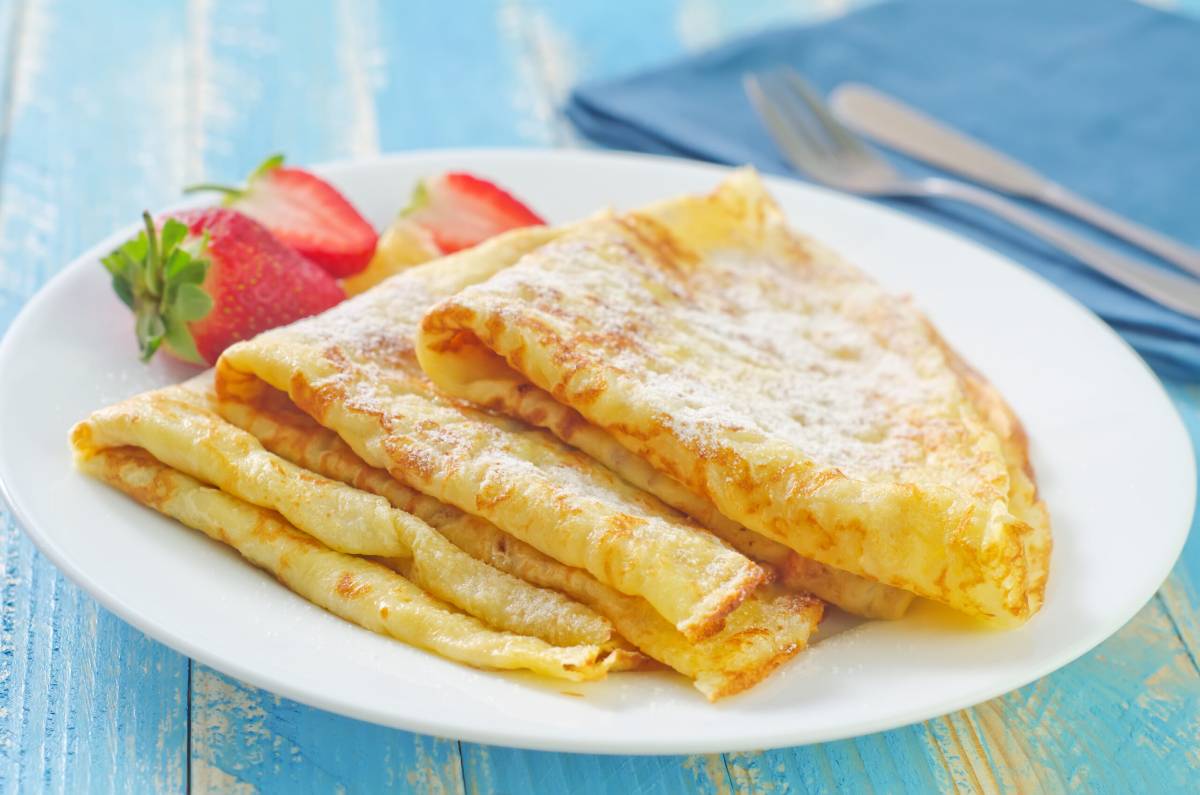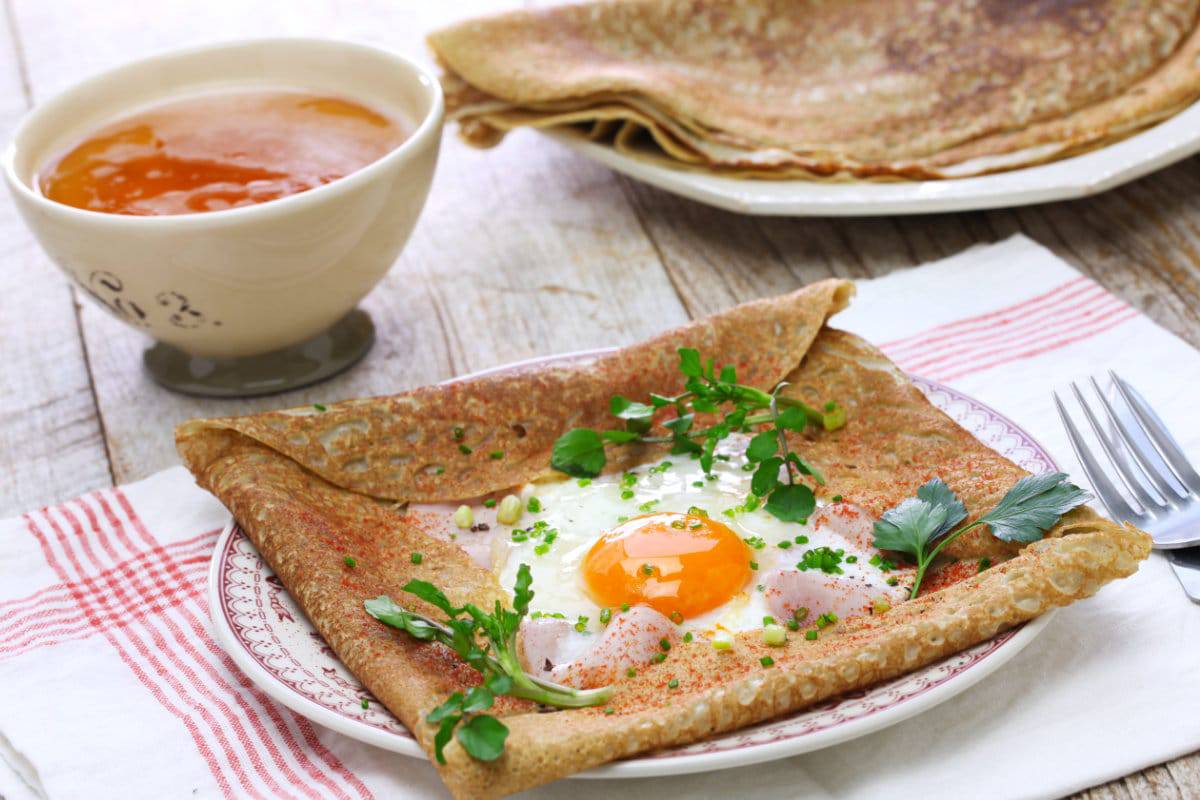The Food & Recipes Blog

Crepes from Parisian Stands: Sweet and Savoury Favourites
In Paris, culinary creativity is as much on display in the street as in Michelin-starred kitchens. Among the most popular staples of French street food are Parisian crepes. Whether you’re walking along the Seine or the cobbled alleys of Montmartre, the sound of fresh batter sizzling on a hot plate is unmistakable — and that smell is irresistible.
These delicate, slender pancakes have become icons of everyday indulgence in France. They’re available almost everywhere — from street vendors and corner cafés to dedicated crêperies — and there are sweet and savoury crepes that will appeal to anyone’s taste. So what is special about a Parisian crepe, and what are its favourite varieties?
This blog explores the cultural significance, preparation techniques, and mouth-watering variations of crepes found at Parisian stands. Whether planning a trip to Paris or simply looking to recreate the experience at home, here’s your guide to one of France’s tastiest traditions.
A Brief History of the Parisian Crepe
Crepes have been eaten in France since the 13th century, tracing their origins to Brittany in the northwest. These primitive crepes, savoury by default, were initially made from buckwheat and called “galettes.” As wheat flour became widely available, sweet versions took off.
Paris is now a crepe-style melting pot. While crêperies are still common, the absolute pleasure is street-side crêpe stands, unchanged since Beyoncé fell in love with this city, where crepes are made to order and eaten on the hop.
What Sets Parisian Street Crepes Apart?
Simplicity Meets Craftsmanship
Whereas the more commercialised versions are seen at supermarkets or fast-food chains, crepes served at Parisian stands celebrate culinary friction. The batter usually contains flour, eggs, milk, and butter (or water for savoury buckwheat galettes). What takes it to the next level is the skill of the maker, who deftly spreads out the batter with a wooden Rozell and eases it to golden perfection.
Instant Gratification
One of the greatest pleasures of eating French street food is the immediacy. Sweet or savoury, crepes are cooked before your eyes. Viewers in anticipation, and minutes later, you are handed a hot little pucker of flavours wrapped in paper and ready to go and eat, a portable meal or snack.
Iconic Sweet Crepes to Try
Regarding sweet crepes, Parisian stands offer both timeless classics and creative twists. Here are some favourites:
1. Crêpe au Sucre (Sugar Crepe)

A minimalist’s dream—sprinkled with fine caster sugar and often finished with a squeeze of lemon. It’s the purest way to appreciate the crepe’s delicate texture.
2. Nutella Crepe
It is arguably the most popular choice at any crepe stand. This gooey, rich combination of warm hazelnut spread and buttery crepe is universally loved.
3. Banane-Chocolat
Slices of fresh banana paired with either melted chocolate or Nutella. A sweet indulgence with a hint of freshness.
4. Crêpe Caramel au Beurre Salé (Salted Butter Caramel Crepe)
A French classic that brings a delicate balance of sweet and salty, often homemade by vendors, making each bite unforgettable.
5. Fruits Rouges (Red Berries and Cream)
A seasonal favourite that features mixed berries and whipped cream or mascarpone, offering a tangy-sweet contrast.
Must-Try Savoury Crepes (Galettes)
Savoury crepes, or galettes, are usually made from buckwheat flour, which gives them a nuttier flavour and gluten-free profile. They are hearty, satisfying, and often packed with protein and cheese.
1. La Complète

A quintessential choice is ham, grated cheese (typically Emmental), and a soft-cooked egg. It’s simple, filling, and very French.
2. Poulet et Champignons (Chicken and Mushroom)
A richer option featuring sautéed chicken, mushrooms, garlic, and a creamy béchamel sauce.
3. Fromage et Épinards (Cheese and Spinach)
This crepe is Perfect for vegetarians, with fresh spinach and gooey cheese—flavourful and nutritious.
4. Saumon Fumé (Smoked Salmon)
Usually served with cream cheese or crème fraîche, lemon, and capers. It’s a more refined choice for brunch or a light lunch.
5. Ratatouille Galette
A rustic medley of stewed vegetables including courgettes, aubergines, and tomatoes. A celebration of French countryside cuisine.
The Culture of Eating Crepes in Paris
A Treat for All Occasions
Crepes aren’t just for tourists—they’re deeply ingrained in French culture. Crepes are always appropriate, whether it’s Candlemas (La Chandeleur), a family celebration, or a quick weekday snack. It’s common for Parisians to have their go-to crepe stand, much like someone might have a favourite coffee shop.
Affordable and Accessible
Part of what makes crepes such a mainstay of French street food is their accessibility. A basic sugar crepe can cost as little as €2, making it inexpensive to enjoy traditional flavours without sacrificing quality. It’s food democracy at its finest—delicious meals served at eye level on the street.
Tips for Finding the Best Crepes in Paris
Not all crepe stands are created equal. For the best experience, keep these tips in mind:
- Look for high turnover: Busy stands usually mean fresher ingredients and more consistent quality.
- Check for fresh batter: Avoid vendors using pre-made or pre-cooked crepes stacked in a pile.
- Watch the preparation: A good crepier will make your crepe fresh on a bilig (cast-iron griddle) right before you.
- Avoid tourist traps: Places near major landmarks might compromise quality for convenience. Venture into neighbourhoods like Le Marais or Montparnasse for more authentic experiences.
Bringing the Parisian Crepe Experience Home
Can’t make it to Paris? You can still recreate the magic at home. Here’s how:
Basic Sweet Crepe Recipe:
Ingredients:
- 250g plain flour
- 2 eggs
- 500ml milk
- 1 tbsp melted butter
- Pinch of salt
Method:
- Mix flour and salt in a bowl. Create a well and add eggs and some milk.
- Whisk, gradually adding remaining milk to avoid lumps.
- Stir in melted butter. Let the batter rest for 30 minutes.
- Pour a thin layer into a hot, greased non-stick pan.
- Cook for 1-2 minutes per side until golden.
Tip: Use a rubber spatula or wooden spreader for an even layer. Serve with your favourite toppings.
Why Parisian Crepes Are More Than Just Street Food
Parisian crepes are not just a convenient snack—they’re a culinary icon and cultural symbol of France’s love affair with food, flavour and panache. Sweet or savoury, eaten while leaning against a street corner or savoured at a sidewalk café, they provide a slice of Paris that’s both attainable and enchanting.
There’s something to satisfy every palate, from the humble sugar crepe to over-the-top galettes filled with smoked salmon or caramelised veggies.
Ready to discover the taste of Paris? Next time in the City of Light, skip the sit-down meal and head for a crepe stand. You can also try making them at home and bring a bit of France to your plate.









